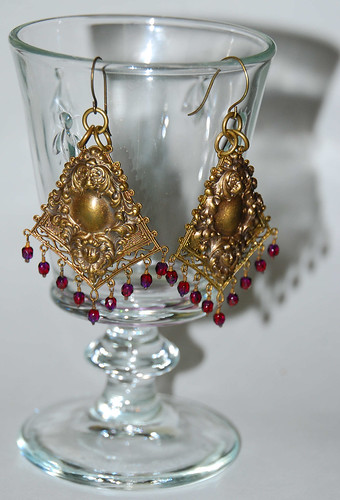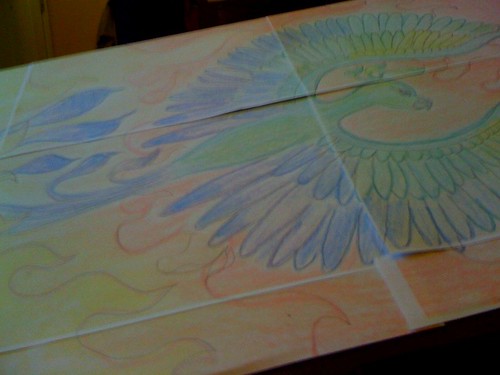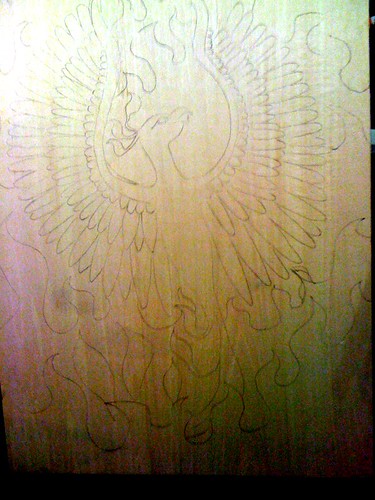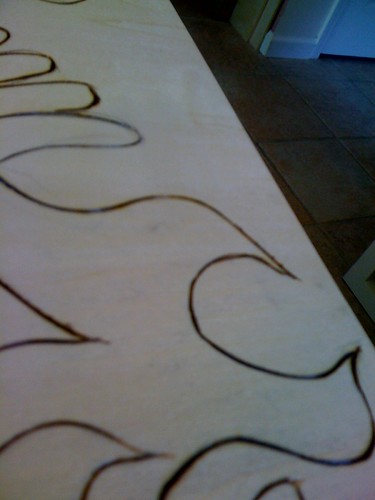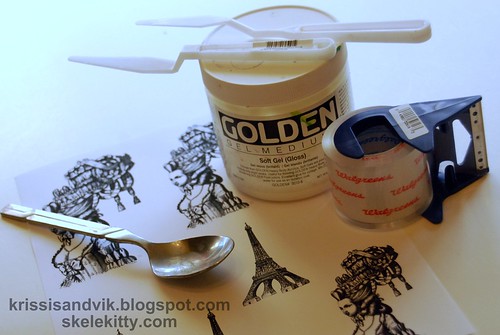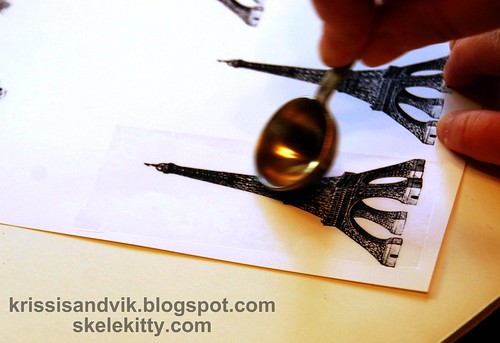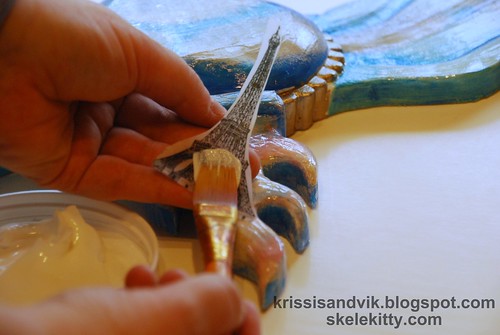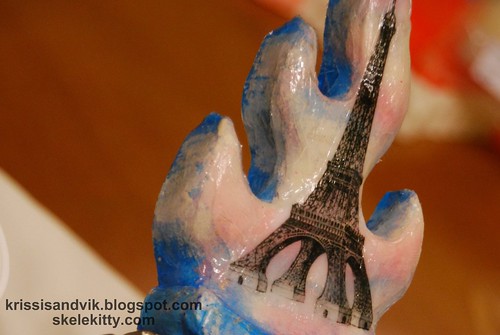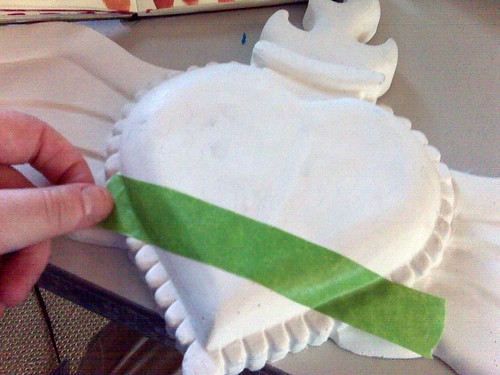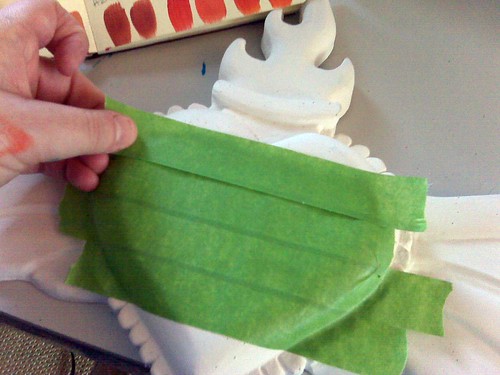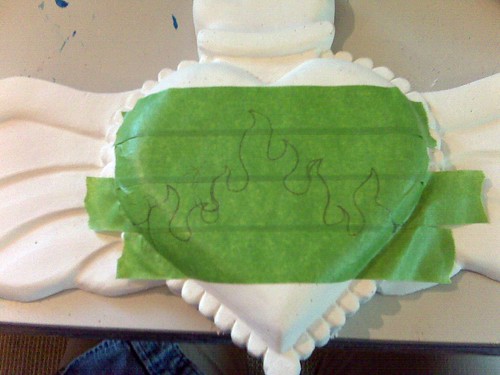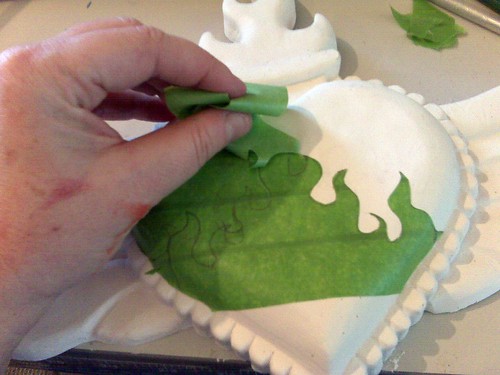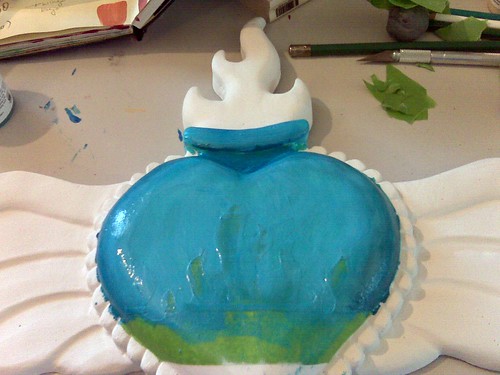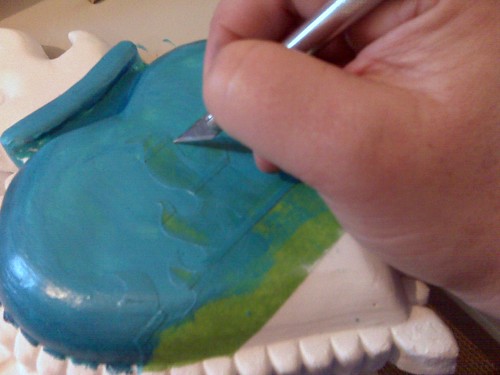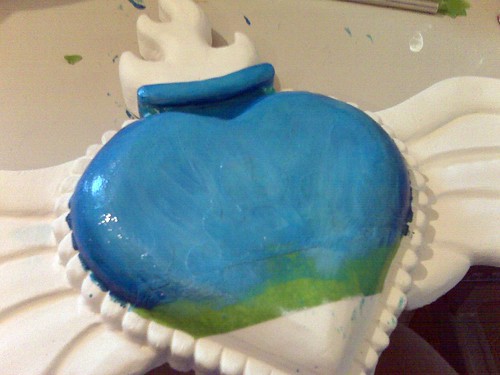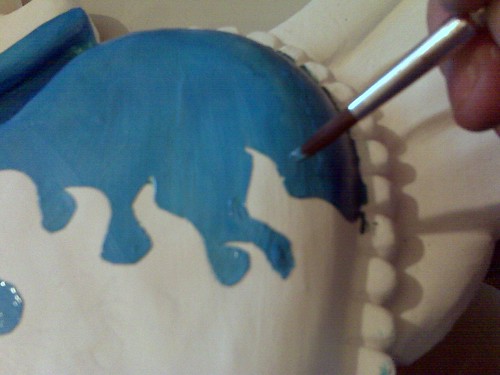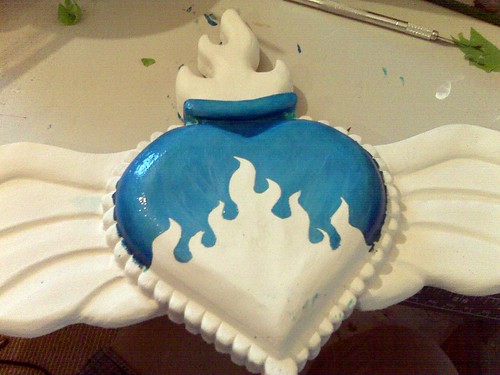Did you (or perhaps your brother) build models when you were a kid? Remember the super cool "water slide" decals that you used to put the Union colors on your Sopwith Camel? (Oh, tidbit o' info, the British flag is only the "Union Jack" at sea - at all other times, it is the "Union Flag.")
Well, now you can make your OWN water slide decals at home without any special sign making equipment. All you need is an inkjet printer, a paper-backed film made for just such a purpose and some clear spray paint. I found this amazing little piece of information while researching a DIY tutorial for customizing car "roundel" badges. Chad used some sandpaper, elbow grease, primer and the decals to turn these:

into these!

As soon as my replacement roundels arrive (I found the oddly sized ones for the Z4 MC at Bavarian Autosport, but the two fender badges are on backorder for a couple weeks), I will be making custom badges for the new Skele-mobile. Imagine, if you will, this photo replacing the usual blue & white logo badges:

YEAH, BABY!
OK, so I probably already knew that inkjet water-slide decal paper existed, but never actually saw it in any of my art/craft supply stores and none of my crafty friends introduced me to it. So off I went to the link Chad provided on his tutorial to purchase some of the paper backed printer film and found some other goodies that were so awesome, that I almost fell out of my chair!
Temporary tattoo paper
 Yeah, I know, this has been around forever too, but now you aren't just stuck with whatever flash-type tattoos get passed out at county fairs. You can turn your own art into temporary tattoos! Soon I can turn out new Skelekitty designs as temporary tattoos like *snap* that. I plan to give these these out as freebies at art shows, for inclusion art and print orders and application to my local 'tween fans, and seriously, how much fun is that?
Yeah, I know, this has been around forever too, but now you aren't just stuck with whatever flash-type tattoos get passed out at county fairs. You can turn your own art into temporary tattoos! Soon I can turn out new Skelekitty designs as temporary tattoos like *snap* that. I plan to give these these out as freebies at art shows, for inclusion art and print orders and application to my local 'tween fans, and seriously, how much fun is that?
Rub on decal paper
Anyone who has scrapbooked or done even a small amount of mixed-media or collage projects has used or at least seen rub on decals. They have nearly invisible edges (not like clear stickers or tape transfers), are easy to find in your local craft supply store and come in some really wonderful colors and intricate designs.
But what if you want to add text or an image you can't find? Well, sure, you could go the tape transfer route, but what if you don't have a laser printer or access to a photocopier for a nice crisp transfer? Well, you could print onto a clean transparency and then use it like a rub on, but again, the transfer isn't perfectly crisp. Enter dry rub-on transfer paper which you can find in all kinds of online shops (there is also a line created specifically for use on wood!). The only drawback of making your own over purchasing them from the stores (besides the obvious copyright issues) is that you can't make them in white. Still...! I'm looking forward to using it for adding custom text to my art projects.
Again, there are lots of companies in the US, Canada and the UK which offer these products. I'm sure you can even buy them from some local print specialty shops. When my orders arrive, I'll play around and post some tips on using them.
Enjoy! Krissi
Have you created your own tattoos, stickers, rub-ons or auto decals? Send me a link to your tutorial and I'll post it!
Read more ...
Well, now you can make your OWN water slide decals at home without any special sign making equipment. All you need is an inkjet printer, a paper-backed film made for just such a purpose and some clear spray paint. I found this amazing little piece of information while researching a DIY tutorial for customizing car "roundel" badges. Chad used some sandpaper, elbow grease, primer and the decals to turn these:

into these!

As soon as my replacement roundels arrive (I found the oddly sized ones for the Z4 MC at Bavarian Autosport, but the two fender badges are on backorder for a couple weeks), I will be making custom badges for the new Skele-mobile. Imagine, if you will, this photo replacing the usual blue & white logo badges:

YEAH, BABY!
OK, so I probably already knew that inkjet water-slide decal paper existed, but never actually saw it in any of my art/craft supply stores and none of my crafty friends introduced me to it. So off I went to the link Chad provided on his tutorial to purchase some of the paper backed printer film and found some other goodies that were so awesome, that I almost fell out of my chair!
Temporary tattoo paper
 Yeah, I know, this has been around forever too, but now you aren't just stuck with whatever flash-type tattoos get passed out at county fairs. You can turn your own art into temporary tattoos! Soon I can turn out new Skelekitty designs as temporary tattoos like *snap* that. I plan to give these these out as freebies at art shows, for inclusion art and print orders and application to my local 'tween fans, and seriously, how much fun is that?
Yeah, I know, this has been around forever too, but now you aren't just stuck with whatever flash-type tattoos get passed out at county fairs. You can turn your own art into temporary tattoos! Soon I can turn out new Skelekitty designs as temporary tattoos like *snap* that. I plan to give these these out as freebies at art shows, for inclusion art and print orders and application to my local 'tween fans, and seriously, how much fun is that?Rub on decal paper
Anyone who has scrapbooked or done even a small amount of mixed-media or collage projects has used or at least seen rub on decals. They have nearly invisible edges (not like clear stickers or tape transfers), are easy to find in your local craft supply store and come in some really wonderful colors and intricate designs.
But what if you want to add text or an image you can't find? Well, sure, you could go the tape transfer route, but what if you don't have a laser printer or access to a photocopier for a nice crisp transfer? Well, you could print onto a clean transparency and then use it like a rub on, but again, the transfer isn't perfectly crisp. Enter dry rub-on transfer paper which you can find in all kinds of online shops (there is also a line created specifically for use on wood!). The only drawback of making your own over purchasing them from the stores (besides the obvious copyright issues) is that you can't make them in white. Still...! I'm looking forward to using it for adding custom text to my art projects.
Again, there are lots of companies in the US, Canada and the UK which offer these products. I'm sure you can even buy them from some local print specialty shops. When my orders arrive, I'll play around and post some tips on using them.
Enjoy! Krissi
Have you created your own tattoos, stickers, rub-ons or auto decals? Send me a link to your tutorial and I'll post it!



